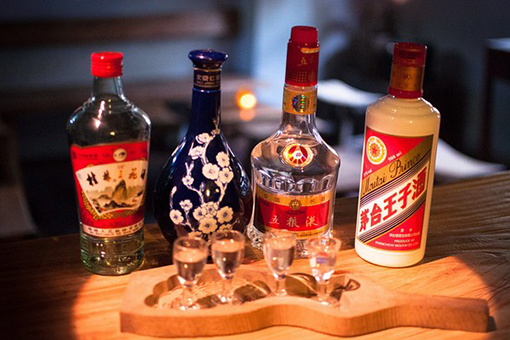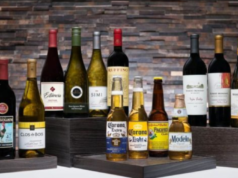Nope, it’s not vodka or whiskey. It’s baijiu.
The back story: What’s the world’s biggest-selling spirits category? You’re probably thinking whiskey. Or vodka. It’s actually baijiu (pronounced bye-jo), a Chinese sip, made from grains (typically sorghum), that accounts for $23 billion in sales annually, according to a research report from McKinsey & Co. and UBS. Why is baijiu so big? It all has to do with China’s sizable population — 1.3 billion people (more than four times that of the U.S., in case you’re counting) — and the fact that drinking is an important part of Chinese culture (baijiu is typically enjoyed throughout the meal, not just before or after). Let’s just say no occasion in China goes by without a baijiu toast (including President Nixon’s historic 1972 visit, though it should be noted that newsman Dan Rather described the spirit as “liquid razor blades.”)
Now, there’s a push to bring baijiu to the West — specifically, to the U.S. (Previously, the spirit’s presence in America was limited to just the occasional Chinatown restaurant or liquor shop that catered to Chinese-Americans.) Driving the trend is the broader boom in craft and exotic (and foreign) spirits (chicken-flavored mezcal, anyone?). “Suddenly, everyone has an open mind about new flavors,” says Manny Burnichon, president of Private Cask Imports, a company that’s partnering with CNS Imports, the major U.S. distributor of baijiu, to promote the spirit.
But Burnichon says it also doesn’t hurt that baijiu producers have an extra incentive to embrace new markets — namely, they’re concerned about the Chinese baijiu market drying up (pardon the pun) in the wake of a government crackdown on gifting to public officials. To top it off, Burnichon believes American bars, restaurants and hotels will find it increasingly necessary to cater to the growing influx of Chinese businesspeople in this country by offering them a taste of home. “There deserves to be at least one bottle of baijiu behind every bar,” he says.
What we think about them: Baijiu is a broad category, so one bottle couldn’t possibly do it complete justice. (Imagine trying to encapsulate the world of Scotch in a single sip.) Hence, the reason we’re sampling two.
Kweichow Moutai is top-shelf baijiu, the Chinese equivalent of Johnnie Walker Blue. In Burnichon’s words, it’s got a distinct “earthy, mushroom-y, toasty” character that very much speaks to the Chinese palate. And HKB is something of the bad-boy newcomer: It’s a baijiu developed by Charles Lanthier, a Frenchman who lived in China for many years, with the Western market in mind (and with the cocktail crowd in mind — it’s made for mixing). Burnichon points to its “slightly sweeter” profile and notes of pineapple and citrus.
That’s all well and good, but we’d be lying if we said these sips instantly charmed us. At best, they are…interesting. Moutai has a funky fungal thing going on (and at 106 proof, it delivers that thing pretty quickly). HKB is sweet and anise-like (we don’t get much pineapple or citrus), but a bit funky, too. (The alcohol level is a more tolerable 86 proof.) Perhaps something is lost in translation (would baijiu taste better if we were sipping it at a banquet in Beijing?). But as Burnichon points out, just because a sip may be slightly, ahem, challenging to the American palate doesn’t mean it won’t eventually succeed. Ever heard of Jagermeister?
How to enjoy them: Moutai should be sipped neat and, um, savored — ideally in small ceremonial glasses. (The Chinese also down it as a shot.) HKB can also be enjoyed neat, but it was made for mixing. One suggested cocktail from the brand: The HKB Collins (a play on the Tom Collins) with 1.5 ounces HKB, .5 ounces agave syrup, .75 ounces freshly squeezed lemon juice, a few dashes of Angostura bitters and a topping off of soda water.





